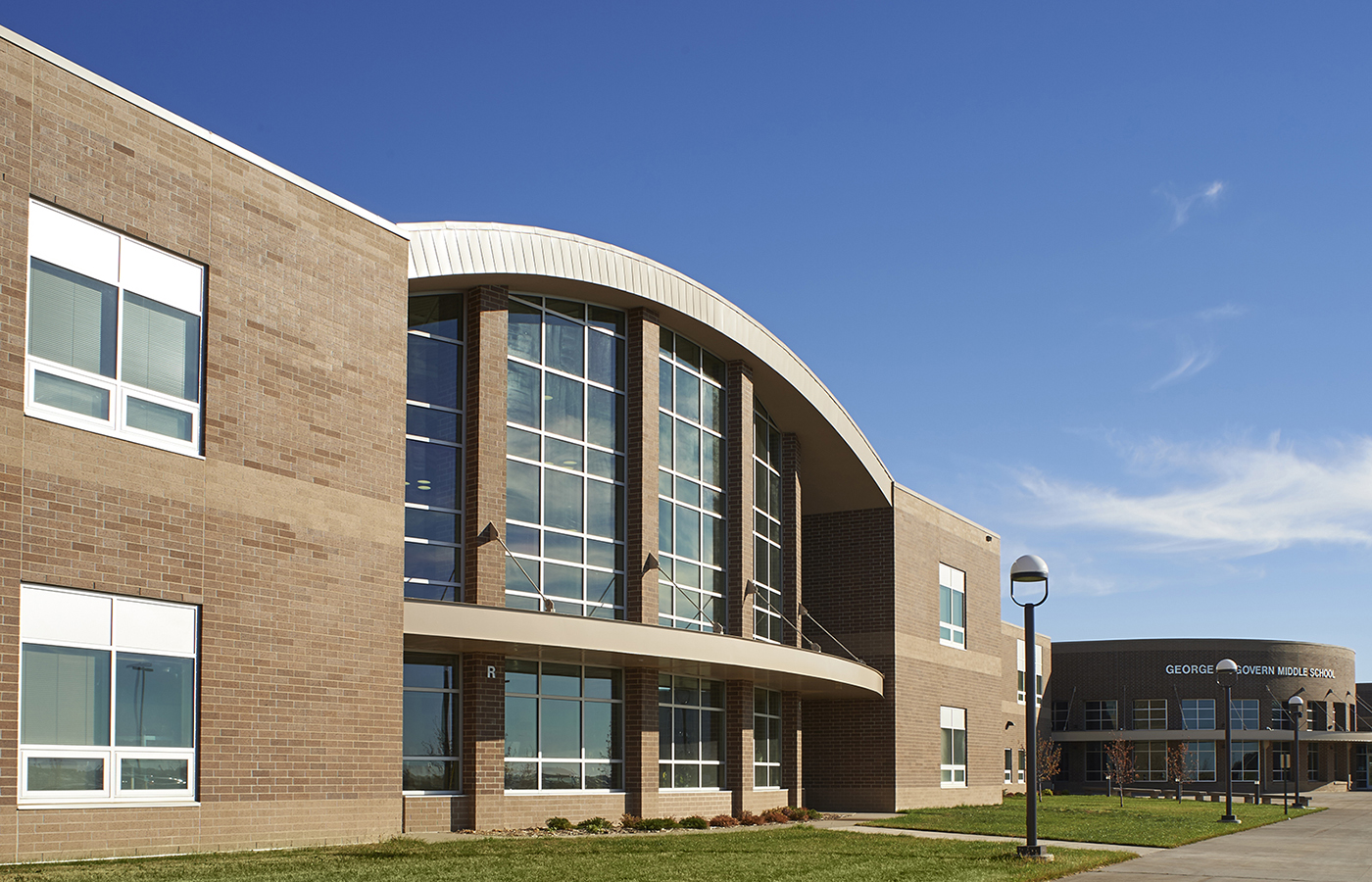Want safer schools? Design them better from the start
Architects bring creativity to school safety.

Written by Keith Thompson.
This article originally appeared on the Blueprint South Dakota blog on September 26, 2018. It was published in the Sioux Falls Business Journal on October 8, 2018.
School safety is never far from our collective awareness, with an average of one school-shooting incident per week in the United States. Although it is well documented that travel to and from school is and will remain far more dangerous statistically, the school building itself needs to uphold the expectation that, once inside, students are in a safe place. As the Sioux Falls School District embarks on a comprehensive facility improvement plan including several new schools, this is one of the primary concerns their architects will have to tackle. Along with physical security improvements, school designers will have to consider new approaches to make the facilities welcoming, inclusive and collaborative.
Examples of secure buildings can be found in any community, from courthouses and banks to police stations and jails. It should go without saying, however, that a school shouldn’t function or look like any of these building types. Designing a school for safety from intruders requires balancing the conflicting needs of a flexible educational environment, visibility and supervision, hardened construction materials and cost of installing safety measures. For example, natural light and views are essential elements in a modern classroom, but the cost of installing ballistic glazing at every window and door is not feasible and still doesn’t provide a guarantee of safety. The same transparent materials and openings that facilitate supervision and communication will also provide a path of low resistance for an intruder.
In our region, schools have generally taken a common-sense approach of securing all exterior doors and requiring visitor access through a supervised and access-controlled main entry. Often, the effort toward inherent security stops there. A number of low-impact design strategies may be utilized as one continues through the school, including creating safe zones in classrooms away from line of sight at the door, eliminating blind spots in corridors and other open circulation space, providing discrete security camera coverage, and providing multiple paths to exit from any given area. It is crucial to minimize the visual impact of these security features so that students are not unnecessarily distracted and remain focused on education.
Even in the most advanced, highest-technology school, the most significant design challenge is not how to best integrate security measures, but how to create a place that fosters community and ultimately works toward resolving the root causes of school violence. Physical building features can never completely deter or actively reduce violence in a school; the most effective tools to prevent future incidents are programmatic — a positive school culture, attentive staff, approachable counseling and school-wide education efforts. However, design interventions can and should support and enhance these aspects of school operations.
A school should provide a safe space for all students to feel at ease, to socialize with peers and to explore healthy outlets for the stresses with which they will all have to cope. Breaking down the scale of large facilities, from the macro scale of entire classroom wings to the micro scale of locker banks, is important to temper a possibly overwhelming first experience and to reduce the potential of feeling “lost in the crowd.” School facilities should steer away from the institutional wherever possible — limiting repetition, endless corridors and cold materials all contribute to a more welcoming environment. Offering program spaces with a little something for everyone — from coffee to video games to arts and athletics spaces — will encourage students to engage in the school community. The good news is that basic security planning isn’t mutually exclusive with community-centered design. But the best and ultimately safest schools will invest much more time and effort on developing the latter.
About Blueprint South Dakota. We’re Architects. We’re South Dakotans. And we’re members of the non-profit American Institute of Architects (AIA) South Dakota. We live all over South Dakota and we love this place. Our goal is to build strong South Dakota communities and to connect ideas and expertise to address challenges in our state. We want to find a blueprint for better cities and towns, and we want to bring about positive change. All blogs posts represent the perspectives of their individual authors and do not reflect any organization’s official position. About AIA South Dakota. AIA South Dakota is the professional non-profit membership association of architects, future architects, and partners in the building and design industries, and the state chapter of the American Institute of Architects (AIA). AIA South Dakota advances the mission that design matters in every South Dakota community. For information, visit aiasouthdakota.org.